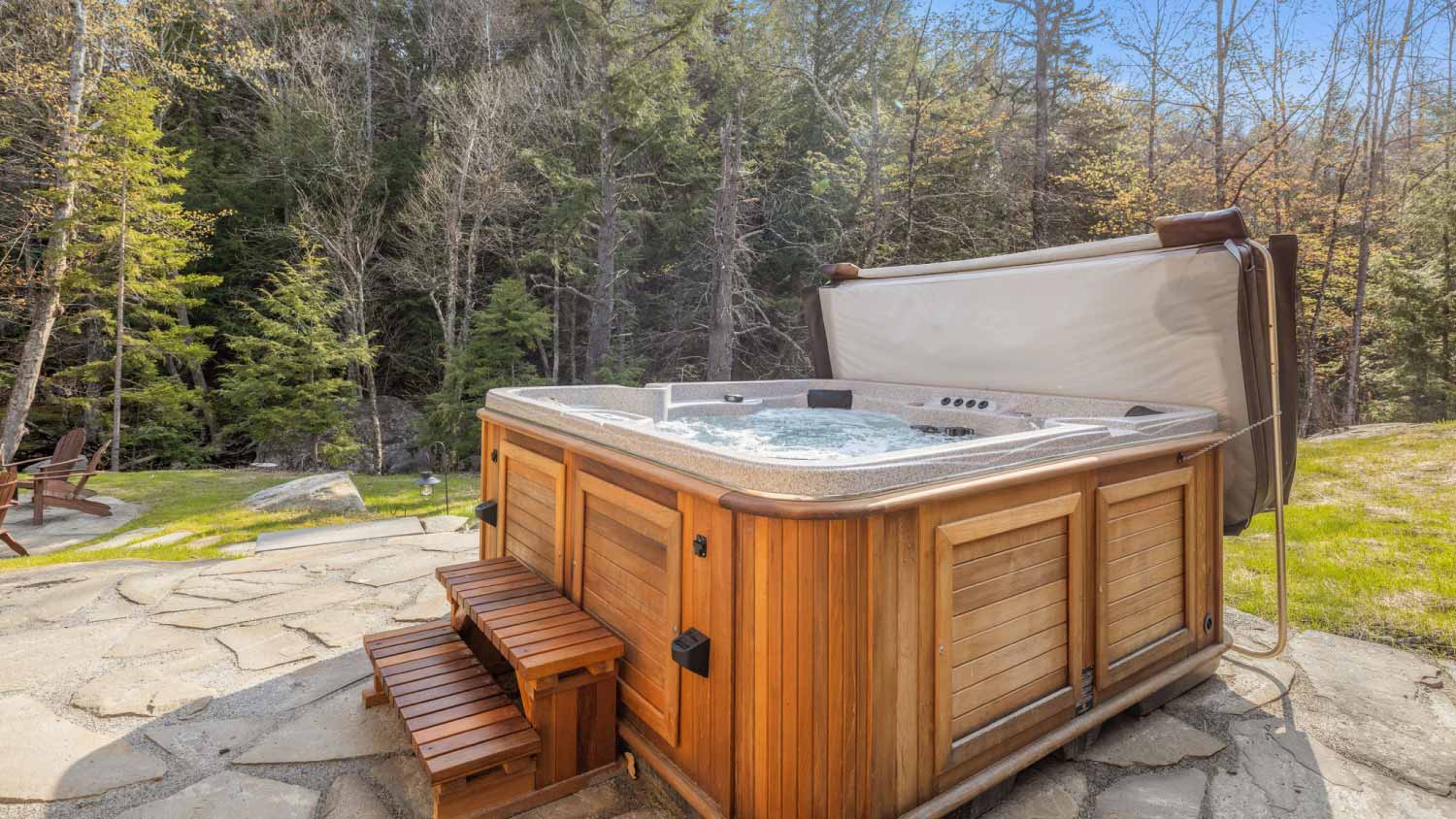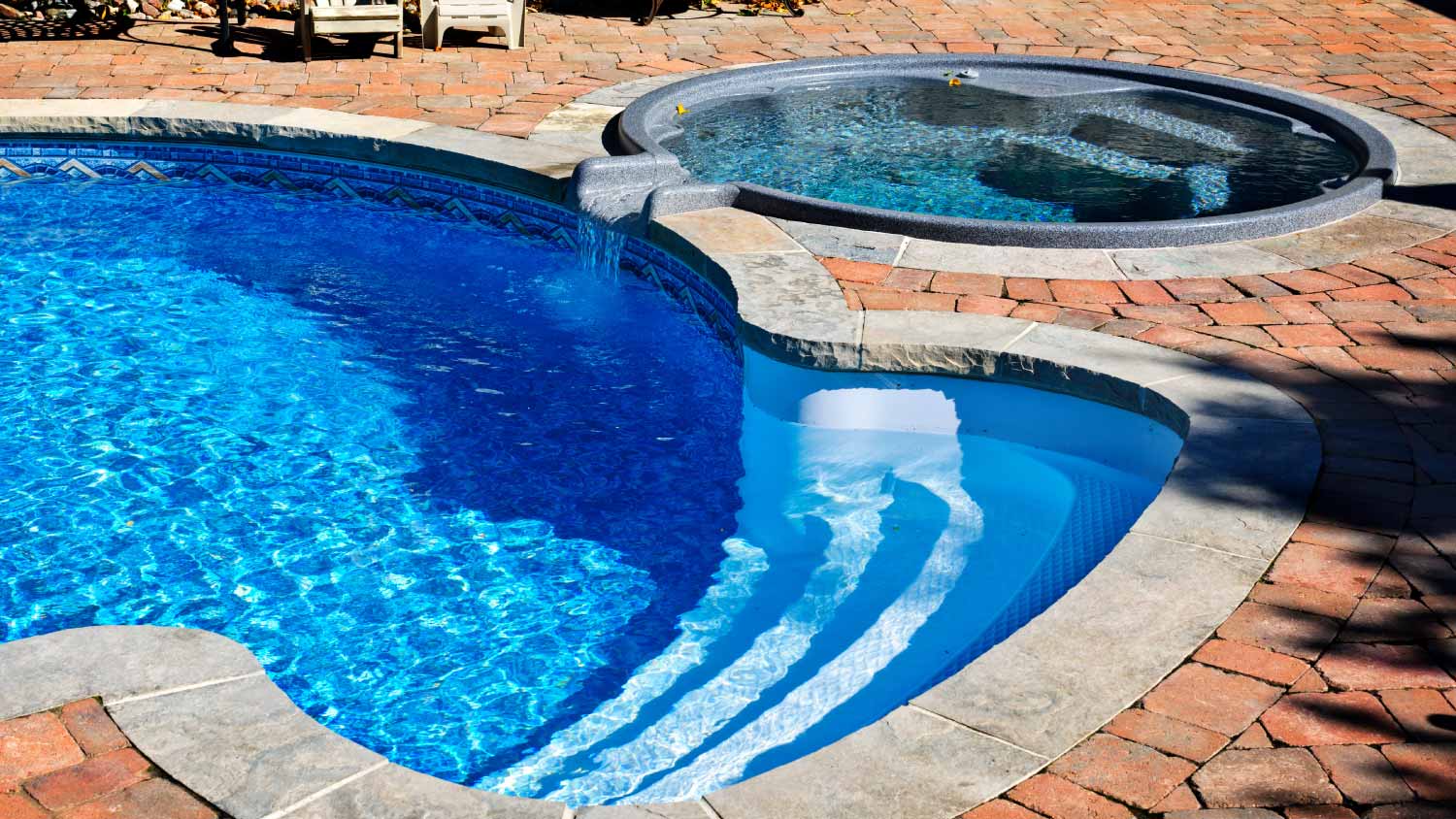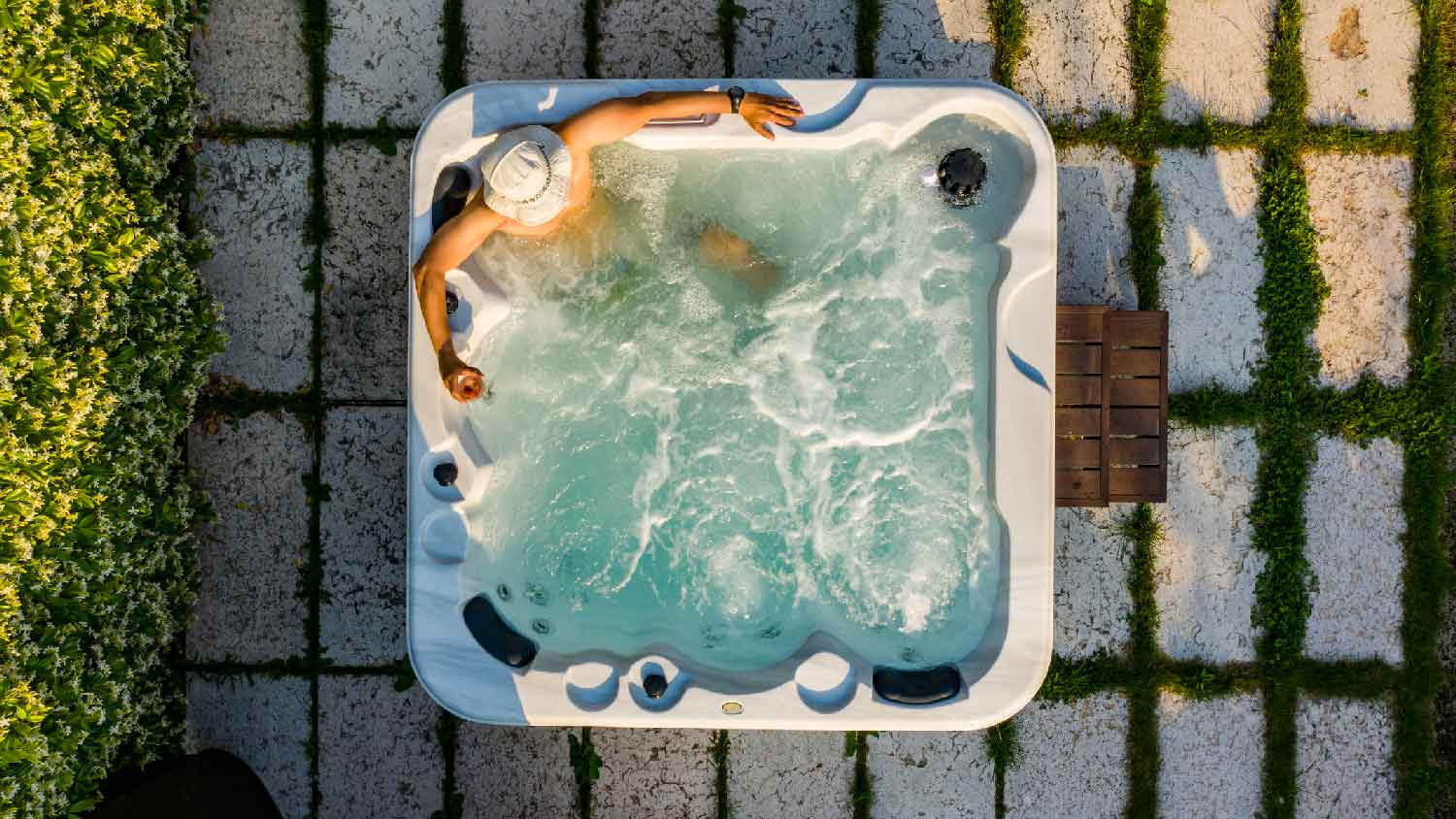
Wondering about hot tub cover costs? Learn what impacts pricing, compare materials, and discover ways to save on your next hot tub cover purchase.
Learn the differences and easily pinpoint which spa is best for you


In-ground hot tubs sit flush to the ground and are often paired with pools.
Traditional above-ground tubs sit on a foundation and provide high-quality soaks.
In-ground tubs are more modern-looking, but have fewer jets.
Perhaps you have been dreaming of your very own spa, but are stumped on what kind to get. While all your options may look fairly similar at first glance, there are lots of differences when comparing an in-ground versus above-ground hot tub. Find out what makes each type unique.

In-ground hot tubs are flush against the ground or may sit partially above-ground. Either way, installers excavate before installing these spas. Above-ground tubs sit on a sand or concrete foundation.
Installers always excavate for in-ground hot tubs. These are often paired with an in-ground pool and have anywhere from five to 20 jets. You can choose from lots of different visual customization options, and they generally look more modern.
| Pros | Cons |
|---|---|
| Sleek appearance | Only five to 20 jets |
| Lots of visual customization options | Only one type of seating |
| Durable and can last up to 20 years | Costs more to operate |
Best for:
Homeowners wanting a modern-looking spa
Elevating an already existing in-ground pool area
Casual soaks rather than hydrotherapy
The streamlined and sleek appearance works well for modern homes.
You can easily customize the spa to match your home and landscaping.
They last for decades, making them a good long-term investment.
They have a fraction of the number of jets compared to above-ground tubs.
You can only get bench seating, which is not comfortable for some short or tall people.
They are less energy efficient, which means higher utility bills.

Above-ground hot tubs sit on a foundation above the ground, which makes for an easier installation process. These spas have 30 to 100 jets, which provide a more dynamic hot tub experience.
| Pros | Cons |
|---|---|
| Thirty to 100 jets | Not as visually appealing |
| Many seating and jet options | Shorter lifespan |
| Costs less | Lower ROI |
Best for:
People seeking powerful soaks
Anyone who wants to use a spa for hydrotherapy
Homeowners who do not want a permanent spa
Thirty to 100 jets that are adjustable in different sizes and positions
Multiple seating options to accommodate people of all sizes
Lower installation costs compared to in-ground tubs
These tubs stick out, and some find them less visually appealing.
They only last five to 20 years, depending on the materials and maintenance.
Not a good choice if you are looking for a return on investment

Choosing between an in-ground and above-ground hot tub is a lot easier once you figure out their differences. Here are the most important points to consider.
In-ground hot tubs are more aesthetically pleasing. They usually sit flush to the ground, so they do not stick out like above-ground spas. And since they are commonly paired with pools, it is typical for in-ground tubs to match the pool design for a streamlined look. You can also get partially raised in-ground tubs, in which case you can customize the walls to match the surroundings.
By comparison, above-ground tubs usually stick out. That is not necessarily a bad thing, but if it bothers you, you can use gazebos and landscaping to spruce up the hot tub area and conceal it from view.
In-ground hot tubs offer more shapes to choose from. Although people tend to stick with squares or rectangles, the options are vast. From octagons, horseshoe shapes, triangles, and semi-circles, you can let your imagination go wild.
There are also more material options for in-ground tubs, including acrylic, tile, vinyl, stainless steel, gunite, and concrete. Plus, you can add eye-catching water features like laminar jets, waterfalls, and fountains. Some people even incorporate landscaping like boulders to create an eye-catching spa.
Above-ground spas do not have as many customization options for shapes. Some manufacturers offer circular, triangular, and even octagonal tubs, but that is much less than in-ground spas. You are also more limited when it comes to choosing the materials for your spa cabinet and shell.
Where they do win, though, is with customization for seating and jets. While in-ground spas are limited to bench seating, you can choose from a variety of options for above-ground tubs. From captain’s chairs to loungers to standard seats, there are different choices for people of all heights and sizes.
Above-ground spas are also more powerful, boasting 30 to 100 jets, compared to the five to 20 jets that in-ground tubs have. In-ground spas usually have standard jets, whereas above-ground ones can have directional, pulsating, cluster, and rotating jets. More seating and jet options maximize hot tub benefits, whether you are using it for relaxation or hydrotherapy.
The durability of a hot tub depends more on the materials it is made of, rather than whether it is in-ground or above-ground. Common materials for in-ground tubs are acrylic, fiberglass, and concrete. All of these are durable, especially acrylic, which is scratch resistant.
Popular above-ground spa shell materials are acrylic, rotomolded plastic, and vinyl. The first two options are much more durable than vinyl, which is susceptible to tears. While traditional tubs are durable, the inflatable ones can easily rip.
In-ground hot tubs cost considerably more than above-ground spas. An in-ground spa costs $5,000 to $25,000 while above-ground hot tubs cost $400 to $18,000. In addition to the upfront costs, you should also think about the energy costs to keep a spa running. You can expect monthly utilities to run $30 or more for in-ground tubs and $20 to $30 for above-ground tubs.
The process of installing a hot tub is complex, especially for in-ground tubs. The good news is that, if you are installing a pool at the same time, a pool company can tackle both projects simultaneously, saving you time and money.
The process of installing an in-ground spa requires excavation, plumbing, electrical work, foundation installation, and construction of the hot tub. It is a job that you should pass off to professionals, as it is not DIY-friendly. In reality, the complex installation might sway you to choose an above-ground spa, since it is much easier to install.
If you want a DIY-friendly above-ground hot tub, get an inflatable one. Otherwise, you will need to hire a pro to help with either plug-and-play or traditional spas. They are bulky and require electrical work, which you should never attempt on your own.
While some hot tub problems are fairly easy to fix—like clogged filters—others are more difficult. Generally, it is easier to get to the inner parts and pipes of above-ground hot tubs since you can quickly open the access door.
For either spa type, you should let the pros handle anything that goes beyond regular maintenance. This is because there is a lot of electrical wiring in a hot tub, and if you make a mistake, you are at high risk of electrocution. If you need help, hire a hot tub installer near you.
Maintenance tasks for in-ground and above-ground spas are the same. They both require regular water testing, balancing, sanitizing, and shocking. You have to drain them every three months or so, depending on the usage.
The only scenario where an in-ground tub is harder to maintain is if you do not use a cover. It is highly recommended that you use a cover not just for maintenance reasons, but to help keep heat in the spa; however, many in-ground tubs, especially spillover ones where the pool and spa connect, do not have covers. In this case, you will have a lot more debris like leaves falling in the tub. Over time, you will likely notice dirt building up on the spa floor.
An in-ground hot tub can last up to 20 years, while above-ground hot tubs last five to 20 years. The actual life span of the spa depends on the quality of materials and how well you maintain it.
Above-ground tubs that only last five years are usually inflatable or made with low-quality plastics. You should also avoid wood or metal cabinets, since they only last three to five years. Wood tends to rot, while metal can corrode.
Above-ground hot tubs are more eco-friendly than in-ground tubs because they use less energy. Once an above-ground tub is on and working, they maintain their heat. Almost all homeowners use hot tub covers for their above-ground spas, which help to trap heat inside.
In-ground spas work differently and require preheating every time you want to use them. And not everyone uses covers for their in-ground spa, which means all the heat dissipates into the air.
The ROI for an in-ground hot tub is around 50%, and you can ensure the best ROI by creating a beautiful spa area. Some things that buyers look for include a high level of privacy or a nice add-on like a new deck.
On the other hand, it is harder to pinpoint the ROI for an above-ground spa. The resale value is roughly 25% to 33%, so you can expect to make a little bit of your money back that way. If, however, you have a poorly maintained hot tub, it can take away from the appeal of your home and even devalue it.
From average costs to expert advice, get all the answers you need to get your job done.

Wondering about hot tub cover costs? Learn what impacts pricing, compare materials, and discover ways to save on your next hot tub cover purchase.

Swim spa costs vary, but each unit offers the benefits of a pool and hot tub combined. Use this guide to plan your budget.

Discover how much a saltwater hot tub costs on average, including installation and ongoing expenses, plus tips to save money and compare DIY vs. pro options.

Does your hot tub have you seeing green? Get the answer to "why is my hot tub green" and find out how to get the water back to normal.

If you’re considering adding a pool to your property, you might be wondering what time of year you should buy it. Read on to see why the end of the swimming season in most climates is actually the best time to make your pool purchase.

Find out what impacts sauna repair cost, get estimates, and learn how to save on repairs. Empower your budget with expert tips for every sauna repair scenario.